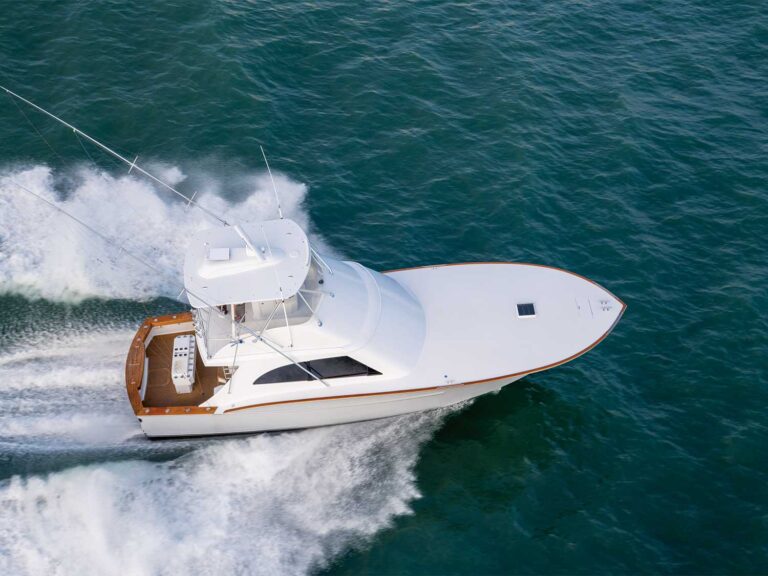
When I first started wiring marlin, I felt like I was in control. We were using 24-foot leaders, and then when I went to Australia’s Great Barrier Reef, we were using 30-foot leaders. The marlin would jump at the boat, and it seemed like we knew where they were and what they might hit (or so I thought).
When I started fishing for world records, we were using 15-foot leaders, and things started to get a bit scary. We had a few fish jump at the boat and break off their bills in the hull. We also had a few deckhands get pulled over the side, but that’s another story.
One of my deckhands even turned over a fish in midair on a 15-foot leader; that fish jumped at the boat and put its bill right through the transom. It was an exceedingly hard hit, and the bill broke off over the top of the fish’s lower jaw. If the marlin had been just a little bit higher, it could have killed my deckhand or the angler.
When I was on the Great Barrier Reef, I heard about a mate who had a black marlin jump into the boat and jam its bill into his chest, puncturing his lung. There was another incident where a marlin speared a mate in the mouth and throat — he couldn’t say anything, just gurgle blood. And then there are all the videos of marlin jumping into boats on Facebook and YouTube. It’s all really crazy stuff.
We recently went to the seamounts off Costa Rica on The Hooker with some friends. With my laid-back attitude of not rushing any of our marlin, we were doing fine. On the second morning of the two-day trip, around 5:15 (which is daylight in Costa Rica), we got a bite from a 200-plus-pound blue, and the fish swam right to the boat. We were not lucky enough to get any good photos from the day before, and this marlin swam right up and laid there perfectly alongside us. The guests all lined up for a photo opportunity. As the mate placed a tag in the marlin’s shoulder, the next thing I knew, we had a marlin in the boat. Stuff started flying: rods and reels, buckets and the garbage that was in them, flip-flops and more.
The angler was pushed into the corner of the cockpit, and from the bridge, all I could see was blood all over his face. As the crew tried to get the marlin out through the tuna door, I ran off the bridge and attended to the angler. It looked like he had blood running out of his eye and mouth. After a closer examination, the blood was coming from a cut on his nose that was squirting into his eye, and then down his face and into his mouth. Wow, he was lucky, I thought, and then I looked down and saw his hand. It was sliced wide open. He could still move his fingers, but it was bleeding pretty good from a deep gash. All we could do was close up the wound and lay him down in the salon with his hand over his body. We had more than 100 miles to run home. When we got back, the dockmaster took him to a medical center at the marina. They stitched up his hand, and he said he was ready to go back out fishing.
On the past two trips, I’ve been more cautious than ever, and as each marlin jumps close to us, I can’t help but think it’s coming into the boat.
With more boats out fishing, and as we are catching more marlin than ever, all I can say is be careful out there. Have plenty of medical supplies on board; it would also be a good idea if the crew got some medical training too. I did before I took command of The Madam and headed off to fish remote places, which now include these offshore adventures to the seamounts. Even basic first aid can save a life.
About the Author
Capt. Skip Smith was the captain of The Hooker and The Madam early in his career, and he has 49 IGFA world records to his credit, most of which are billfish on light tackle. He recently wrote a book about his travels and still fishes today aboard The Hooker, a 48-foot G&S out of Quepos, Costa Rica.







